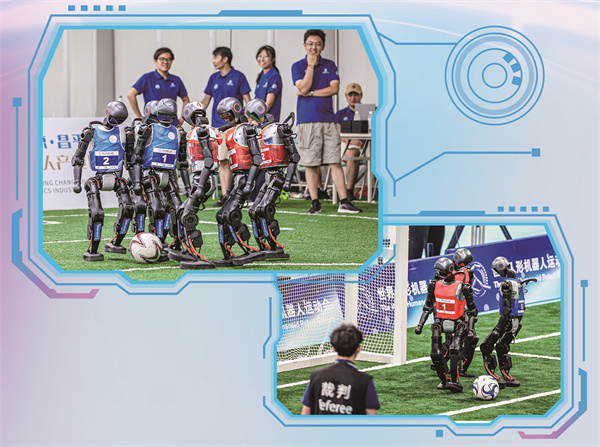Humanoids compete in global robot game
Over 500 humanoid robots from 16 countries compete in soccer, track, and skills events, showcasing cutting-edge AI technology and global innovation.


For the first time, more than 500 humanoid robots from five continents competed in their own global games.
Under the slogan "Racing Toward a Shared Intelligent Future", the 2025 World Humanoid Robot Games (WHRG), held from Aug 14 to 17 in Beijing, brought together around 280 teams from 16 countries to compete in 26 events.
According to the official WHRG website, the four-day games drew moderate inspiration from human sports competitions, including track and field events and gymnastics, to showcase the latest advancements in robot technology.
Each running, jumping, and competing humanoid robot represented a vivid display of human ingenuity and technological skill.
Beyond human-inspired competitions, the games also featured practical, skills-based challenges such as moving materials, sorting medicines, and cleaning in varied scenarios, demonstrating robots' real-world applications.
The games proved popular on social media, with the official hashtag garnering 150 million views on Sina Weibo.
One of the most anticipated events was the 5v5 humanoid robot soccer match, entirely controlled by AI algorithms without any human intervention.
In the thrilling final on Aug 17, Tsinghua University's Hephaestus defeated a team from Germany 1-0 to claim the gold medal.
"When our robots play autonomously on the field, they rely on an integrated system that includes perception, decision-making, and motion control," said Chen Penghui, leader of Tsinghua Hephaestus.
Chen explained that perception involves using the cameras of the robots to gather visual information. Based on this feedback, the robots decide on actions, automatically chase the ball, and perform defensive maneuvers like blocking — all without human input.
Human expertise, however, still plays a crucial role.
For Lin Bin, leader of a team from North China Electric Power University, timeouts are more than just breaks — they are strategic tools to turn the tide at critical moments.




































